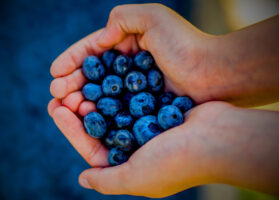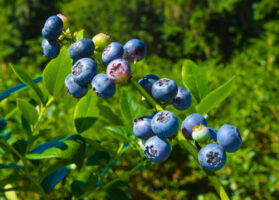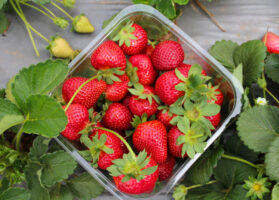Strong supply of US-grown pears through summer
Overview of pears in the U.S. market, complemented by charts from Agronometrics. Original published on June 29, 2023.
The Northwest pear industry has shipped 93 percent of its 2023-24 crop as of early June, which is on par with the five-year average. “U.S.-grown Red and Green Anjous are available through the summer,” says Cat Gipe-Stewart, director of marketing with Superfresh Growers. “We have promotable volume and are ready to support fun summer pear recipes, like grilling pears and pear star cut-outs for patriotic cocktails.”
Superfresh Growers has orchards throughout Oregon and Washington, which provides surety of supply in the case of a natural event such as hail or wind. “Our orchards are geographically spread out, so we are fortunate to have some immunity to local weather events,” says Gipe-Stewart, noting that while California pears will start in July, there are also import pears from Chile and Argentina currently on the market.
New varieties
New varieties coming into the market are bringing excitement into the pear category, including the Mardi Gras pear, which Superfresh Growers is entering its second year in growing and packing the fruit. In fact, following a successful launch, it is expanding its volume for the 2023-2024 season. “The pear is very sweet, buttery, and juicy and excited consumers this past winter. New varieties help the entire category as they remind consumers how delightful pears are,” says Gipe-Stewart. “Pears are an impulse item, and new varieties often drive impulses. Promoting a new variety along with a core pear variety drives incremental sales.”
Pricing update
As for pricing, Nielsen data reports that May pear retail averaged $2.00/lb. Bartlett took the top spot in dollars and volume and averaged $1.94/lb, down $0.05 year over year (YoY), while Anjou came in second and averaged $1.86/lb, up $0.08. Bosc averaged $2.10/lb, up $0.12 YoY.

Source: USDA Market News via Agronometrics.
(Agronometrics users can view this chart with live updates here)
That said, as fertilizer, labor and packaging costs continue rising and driving costs up, the market has not risen accordingly. Gipe-Stewart notes that farmers face three primary obstacles to business continuity here: availability of a reliable and affordable workforce, excessive and unnecessary government regulations and increasingly expensive material inputs like fertilizer. “Solutions for these problems are complicated and dependent on public education, solid markets and economies and the support of federal and local agencies and elected government officials,” she says. “The export market has also been a struggle. Our North American neighbors continue to be strong markets, but tariffs in markets in the Middle East and Asia have all halted sales to a trickle.”
Movement down
She also notes that Nielsen data shows that pear volume movement is down 18 percent, similar to what Superfresh is feeling in its movement. “We are optimistic in the coming months, however. We have a strong supply through the summer, more than the industry, and we are prepared to cover promotional volume,” she says.

Source: USDA Market News via Agronometrics.
(Agronometrics users can view this chart with live updates here)
Looking ahead, there’s no gap predicted between controlled atmosphere Anjous and new crop Bartletts (organic and conventional)–the latter will be the first to harvest starting early/mid-August, followed by organic Starkrimson. Organic Anjou will follow in early September.
“Harvest timing varies depending on the geography of the orchard. Some regions are a few weeks later than last year, others similar to last year and others will be a few days earlier. The variance is due to elevation, variety of pear and Mother Nature and when bloom occurred in the area,” she says. “Each region can also shift as temperatures rise and fall. The warm May we experienced has been shortening growing degree days.”
The News in Charts is a collection of stories from the industry complemented by charts from Agronometrics to help better tell their story.
Access the original article with this (Link)






